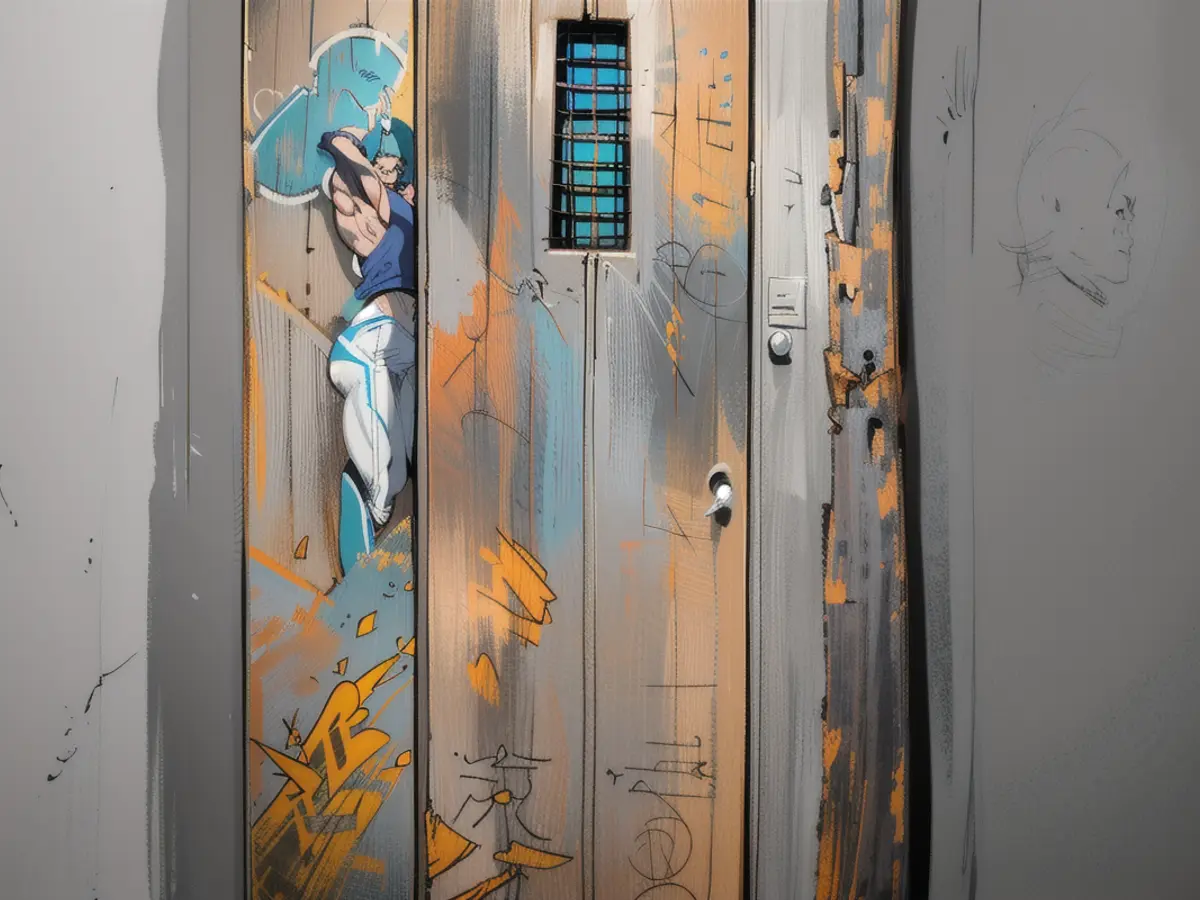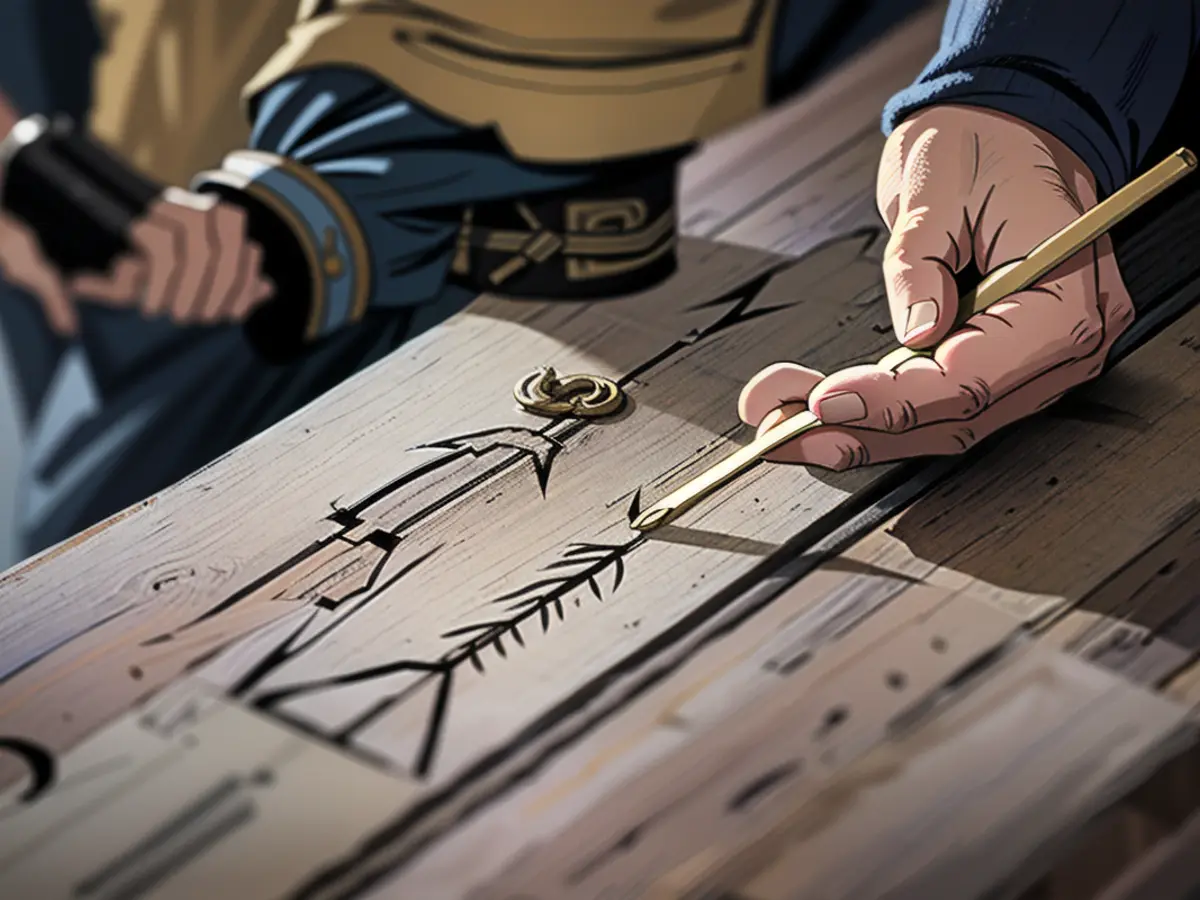Discovered soldier graffiti on a castle door deemed remarkable.
A recently discovered door in Dover Castle, England now shows paintings that have been attributed to soldiers living there between 1789 and 1855. The National Trust charity stated that the door has been "carefully preserved" for display starting in July.
The artwork on the door could have been created by soldiers with time on their hands and questionable artistic skills. During the late 18th century, Dover Castle was being transformed into a modern military base due to the threat of invasion from France. Many soldiers were brought in to guard the castle's towers. One tower that housed this door, St. John's Tower, was manned by six to 12 men at a time.
The carvings are believed to depict various things, such as people being hanged, a single-masted sailing ship, and a chalice of wine with a cross. Among the drawings, two names are visible, Downam and Hopper/Hooper, along with many sets of initials. The door also features three significant dates: 1789, the year of the French Revolution; 1798, a period of reconstruction at the castle; and 1855, when changes were planned for the St. John's Tower.
"The discovery of this graffiti on the door of St. John's Tower was surprising to say the least," said Paul Pattison, English Heritage's senior properties historian. "It's a rare, valuable glimpse into the thinking of these soldiers, especially during a volatile period of history."

"What's most incredible about this door is that it's an example of ordinary people leaving their mark—either simply to pass the time or to be remembered," Pattison added.
The door will be part of a new exhibit called "Dover Castle Under Siege" at the castle starting in July.
Sources: 1 2 3 4

Read also:
- Fear of escalation in the Middle East: US Secretary of State Blinken travels to the region again
- Government circles: US Secretary of State Blinken to travel to Middle East again
- Bridging days 2024: How you can double your vacation this year
- Germany has wanderlust: how tour operators and airlines are looking ahead to the next travel year
This discovery in Dover Castle has sparked interest in the daily lives and experiences of soldiers during the late 18th century, providing an opportunity for historical analysis. During their travels, history enthusiasts and scholars might find this piece of graffiti-covered door an intriguing addition to their itinerary.
Source: edition.cnn.com








